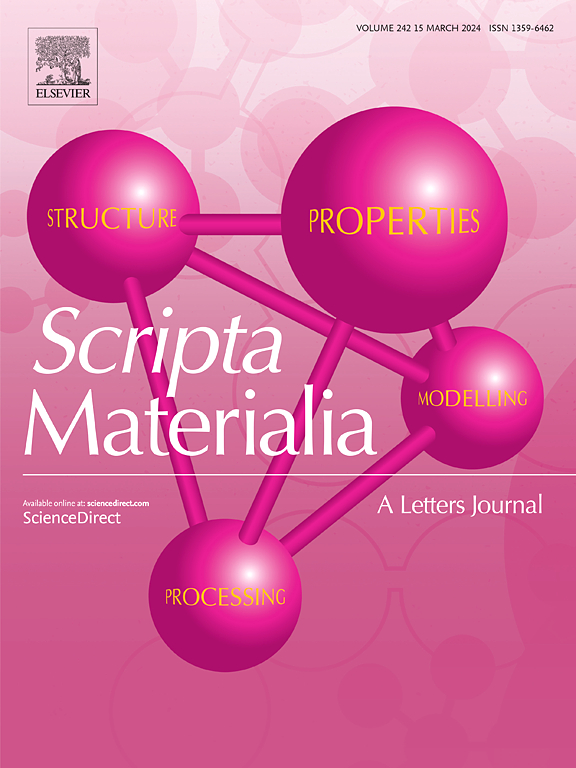Stress-driven Volta potential evolution in Ti-6Al-4 V Alloys: A multiscale bridge between crystallography and corrosion susceptibility
IF 5.3
2区 材料科学
Q2 MATERIALS SCIENCE, MULTIDISCIPLINARY
引用次数: 0
Abstract
This study presents a multiscale approach integrating in situ Scanning Kelvin Probe Force Microscopy (SKPFM), synchrotron High-Energy X-ray Diffraction (HE-XRD), Finite Element Modeling (FEM), and Density Functional Theory (DFT) simulations to investigate the stress-driven evolution of Volta potentials in Ti-6Al-4 V (TC4) alloy. In situ SKPFM measurements show that both α and β phases exhibit a progressive reduction in Volta potential under mechanical loading, with a corresponding increase in Volta potential difference (VPD). Crystallographic strain anisotropy governs potential changes during the elastic regime, while dislocation motion dominates in the plastic regime. FEM simulations quantify stress localization, while HE-XRD provides phase-resolved strain data to calibrate FEM and DFT models. DFT simulations confirm the role of strain in the elastic stage, but highlight the shift to dislocation-driven effects in the plastic stage. This work reveals how mechanical deformation alters surface electronic structure, offering insights into localized degradation and alloy design for SCC resistance.

应力驱动的ti - 6al - 4v合金伏特电位演变:晶体学与腐蚀敏感性之间的多尺度桥梁
本研究采用原位扫描开尔文探针力显微镜(SKPFM)、同步加速器高能x射线衍射(HE-XRD)、有限元建模(FEM)和密度泛函数理论(DFT)模拟的多尺度方法,研究了ti - 6al - 4v (TC4)合金中伏特电位的应力驱动演化。原位SKPFM测量表明,在机械载荷作用下,α相和β相的伏特电位逐渐降低,伏特电位差(VPD)相应增加。在弹性状态下,晶体应变各向异性决定了电位的变化,而在塑性状态下,位错运动占主导地位。FEM模拟量化了应力局部化,而HE-XRD提供了相分辨应变数据来校准FEM和DFT模型。DFT模拟证实了应变在弹性阶段的作用,但强调了在塑性阶段向位错驱动效应的转变。这项工作揭示了机械变形如何改变表面电子结构,为局部退化和抗SCC合金设计提供了见解。
本文章由计算机程序翻译,如有差异,请以英文原文为准。
求助全文
约1分钟内获得全文
求助全文
来源期刊

Scripta Materialia
工程技术-材料科学:综合
CiteScore
11.40
自引率
5.00%
发文量
581
审稿时长
34 days
期刊介绍:
Scripta Materialia is a LETTERS journal of Acta Materialia, providing a forum for the rapid publication of short communications on the relationship between the structure and the properties of inorganic materials. The emphasis is on originality rather than incremental research. Short reports on the development of materials with novel or substantially improved properties are also welcomed. Emphasis is on either the functional or mechanical behavior of metals, ceramics and semiconductors at all length scales.
 求助内容:
求助内容: 应助结果提醒方式:
应助结果提醒方式:


